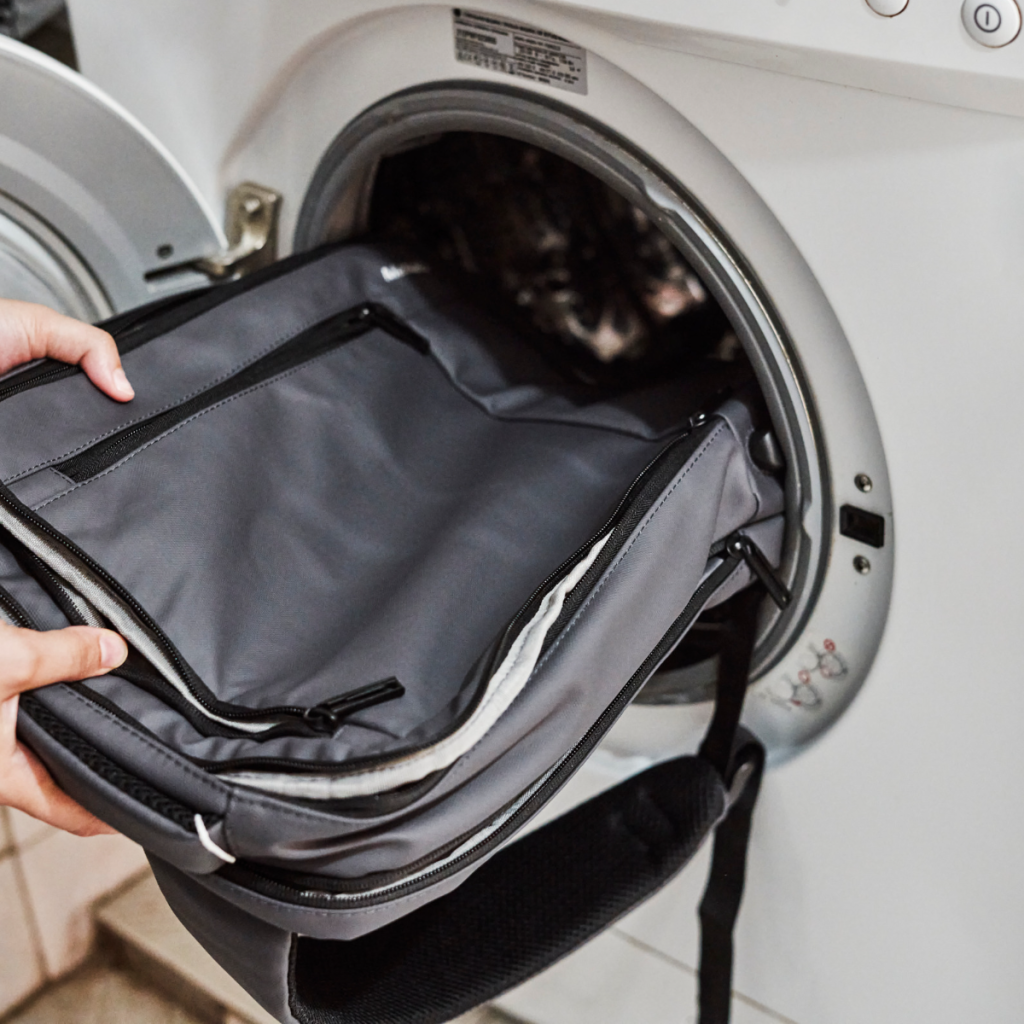Dakine backpacks have garnered a reputation for their exceptional quality, durability, and versatile design, making them a popular choice among outdoor enthusiasts, students, and travelers alike.
Known for their robust construction and thoughtful features, these backpacks are built to withstand a variety of conditions, whether you’re hitting the trails, heading to class, or embarking on an adventurous journey.
The popularity of Dakine backpacks can be attributed to their meticulous craftsmanship and the use of high-quality materials. These backpacks are designed to offer both functionality and style, featuring multiple compartments, ergonomic straps, and durable fabrics that can endure the rigors of daily use.
Given their widespread use in diverse environments, maintaining the cleanliness and condition of your Dakine backpack is crucial to ensure its longevity and performance.
Regular cleaning and proper maintenance are essential for preserving the integrity of your Dakine backpack. Dirt, grime, and stains can accumulate over time, potentially weakening the fabric and zippers if not addressed promptly.
By understanding how to wash a Dakine backpack correctly, you can keep it looking fresh and functioning optimally for years to come. Additionally, routine cleaning helps prevent the buildup of bacteria and odors, ensuring that your backpack remains hygienic and pleasant to use.
This guide will walk you through the step-by-step process of cleaning your Dakine backpack, providing tips and best practices to help you achieve the best results.
Whether your backpack has been exposed to mud on a hiking trip or simply needs a freshening up after daily commutes, knowing the proper cleaning techniques will help you maintain its pristine condition.
By taking the time to care for your Dakine backpack, you can continue to enjoy its many benefits without compromising its durability or aesthetic appeal.
Table of Contents
Materials and Tools Needed
Properly washing a Dakine backpack requires a few essential materials and tools to ensure effective cleaning without causing any damage to the fabric. The following items are necessary for this task:
Mild Detergent: A gentle, non-abrasive detergent is crucial for cleaning your Dakine backpack. Harsh chemicals can degrade the fabric and compromise the integrity of the bag. Opt for a mild detergent that is designed for delicate fabrics to keep your backpack in optimal condition.
Soft Brush or Sponge: To remove dirt and stains gently, you will need a soft brush or sponge. A brush with soft bristles or a sponge with a non-abrasive surface will help clean the backpack without scratching or tearing the material. These tools are ideal for scrubbing away grime while being gentle on the fabric.
Clean Towel: A clean, absorbent towel is indispensable for drying your Dakine backpack after washing. Choose a towel that is large enough to cover the backpack and has good absorbency to efficiently soak up excess water. This will help in speeding up the drying process and prevent any mold or mildew from forming.
Sink or Bathtub: Access to a sink or bathtub is essential for rinsing the backpack thoroughly. These spaces provide enough room to submerge and rinse the backpack properly, ensuring all detergent residues are washed away. A bathtub is particularly useful for larger backpacks that may not fit comfortably in a sink.
Using gentle cleaning agents and the right tools is paramount when learning how to wash a Dakine backpack. Delicate handling and appropriate materials ensure that the fabric remains intact and the backpack continues to serve its purpose effectively.
By gathering these items beforehand, you can facilitate a smooth and efficient cleaning process, prolonging the life of your Dakine backpack.
Preparing the Backpack for Washing
Before diving into the process of how to wash a Dakine backpack, it’s crucial to prepare it thoroughly. Proper preparation ensures that each part of the backpack is cleaned effectively and helps prevent any damage during the washing process. Begin by emptying all compartments. Check every pocket, large or small, to ensure that no items are left inside.
This includes the main compartment, front pockets, and any side or hidden pockets. Removing all items is essential to prevent them from getting damaged and to ensure the backpack is thoroughly cleaned.
Once the backpack is empty, turn it upside down and shake it vigorously to dislodge any loose debris such as crumbs, dirt, or small particles. This shaking step helps remove surface debris that might otherwise get stuck during washing.
Following this, unzip all pockets and compartments. This allows air and water to flow freely through the backpack during the washing, ensuring a more comprehensive clean.
Next, identify any detachable parts of the backpack. This may include straps, hip belts, or smaller pouches that can be removed. These detachable components should be washed separately to ensure they are cleaned properly and to avoid any wear and tear on the main backpack structure.
Follow the manufacturer’s instructions for removing and washing these parts, as some may be machine washable while others may require hand washing.
Taking these preparatory steps is essential in learning how to wash a Dakine backpack effectively. By thoroughly emptying, shaking out loose debris, and unzipping all compartments, you set the stage for a successful cleaning process.
Additionally, washing detachable parts separately ensures that every component of your backpack is given the care it needs, ultimately extending the life and functionality of your Dakine backpack.

Spot Cleaning Stains
Spot cleaning is an essential step when learning how to wash a Dakine backpack, as it targets specific areas without the need for a full wash. Begin by identifying the visible stains on your backpack. Common culprits include dirt, food spills, or ink marks.
Once the stained areas are identified, prepare a cleaning solution using a mild detergent mixed with warm water. It’s crucial to use a mild detergent to avoid damaging the fabric or color of the backpack.
Before applying the detergent solution to the stain, it’s advisable to test it on a small, inconspicuous area of the backpack. This step ensures that the detergent does not cause any discoloration or damage to the fabric. Apply a small amount of the solution to the test area and wait a few minutes to observe any adverse reactions.
Once you’ve confirmed that the detergent is safe to use, proceed with the spot cleaning. Dip a soft brush or a clean cloth into the detergent solution and gently scrub the stained area in a circular motion. Be careful not to scrub too hard, as this can damage the fabric. For tougher stains, you might need to let the detergent solution sit on the stain for a few minutes before scrubbing.
After scrubbing, rinse the spot with clean water to remove any detergent residue. It is important to ensure that all the detergent is rinsed out to prevent any potential damage or discoloration. Use a clean, dry cloth to blot the area and remove excess moisture.
Allow the backpack to air dry completely before using it again. Spot cleaning is a practical and efficient method in maintaining the cleanliness of your Dakine backpack without subjecting it to frequent full washes.
Hand Washing the Backpack
When considering how to wash a Dakine backpack, hand washing is a thorough and safe method that preserves the integrity of the materials. Begin by filling a sink or bathtub with lukewarm water. Avoid using hot water, as it may damage the fabric and any water-resistant coatings.
Next, add a small amount of mild detergent to the water. Harsh chemicals and bleach should be avoided, as they can deteriorate the fabric and fade colors. Opt for a gentle detergent suitable for delicate fabrics. Stir the water to ensure the detergent is well-dissolved and evenly distributed.
Before submerging the backpack, empty all pockets and shake out any loose dirt or debris. Unzip all compartments and remove any detachable components such as straps or hip belts. Once prepped, submerge the backpack in the soapy water, allowing it to soak for a few minutes to loosen any embedded dirt.
Using a soft brush or sponge, gently scrub the backpack’s exterior and interior. Pay close attention to high-contact areas like shoulder straps, zippers, and the bottom of the bag, which tend to accumulate the most grime. Be thorough but gentle to avoid damaging the fabric or stitching.
After scrubbing, it’s crucial to rinse the backpack thoroughly to remove all soap residue. Drain the soapy water and refill the sink or bathtub with clean, lukewarm water. Submerge the backpack again and swish it around to rinse out the detergent. Repeat this process until the water runs clear, indicating that all soap has been removed.
Once rinsed, gently squeeze out excess water without wringing or twisting, which can deform the backpack. Hang the backpack in a well-ventilated area to air dry, avoiding direct sunlight which can cause fading. Ensure all compartments are open to facilitate complete drying.
By following these steps, you can effectively hand wash your Dakine backpack, maintaining its functionality and appearance for many adventures to come.
Drying the Backpack Properly
After thoroughly washing your Dakine backpack, it is imperative to dry it correctly to maintain its integrity and functionality. Air drying is the most recommended method for drying your backpack. Avoid exposing it to direct sunlight or any heat sources such as radiators or tumble dryers, as these can cause the fabric to degrade and colors to fade.
To begin the drying process, gently shake off any excess water from the backpack. Then, hang it upside down in a well-ventilated area. This position helps water to drain out more efficiently and ensures that the internal compartments dry evenly. Using a sturdy hanger or a drying rack can be beneficial in maintaining the backpack’s shape during the drying process.
It is essential to fully open all zippers and compartments, including any smaller pockets, to ensure that air can circulate freely and that no moisture remains trapped inside. If the backpack has removable parts, such as straps or padding, detach these and dry them separately to expedite the process.
Reshaping the backpack while it is still damp can help preserve its original form. Gently mold the structure and pay attention to areas like the bottom and sides, which may lose their shape when wet. Using towels or other soft materials to stuff the backpack can aid in maintaining its shape as it dries.
Be patient and allow sufficient time for your Dakine backpack to dry completely. Depending on the humidity and temperature, this may take anywhere from a few hours to a full day. Ensuring that the backpack is entirely dry before use is crucial, as any remaining moisture can lead to mold or mildew growth.
By following these steps, you can ensure that your Dakine backpack remains in excellent condition, ready for your next adventure. Proper drying not only preserves the fabric and structure but also extends the overall longevity of the backpack.
Regular maintenance of your Dakine backpack can significantly extend its lifespan and keep it looking new between washes. The first step in maintaining the cleanliness of your backpack is through routine spot cleaning.
For minor stains and dirt, use a damp cloth or sponge with mild soap to gently wipe the affected areas. This not only prevents dirt from embedding deep into the fabric but also reduces the frequency of full washes, which can be labor-intensive.
Avoid overloading your Dakine backpack to maintain its structural integrity. Overstuffing can strain zippers, seams, and straps, leading to premature wear and tear. Distribute the weight evenly and use all compartments effectively to minimize stress on any single part of the backpack. This practice not only ensures the longevity of the backpack but also enhances user comfort.
Proper storage is crucial in preventing issues such as mold and mildew. Always store your Dakine backpack in a cool, dry place. Ensure it is completely dry before storing, especially after exposure to moisture.
If the backpack is damp, place it in a well-ventilated area to air dry completely. For long-term storage, consider using a breathable fabric bag to protect it from dust while allowing air circulation.
By adhering to these maintenance practices, you can keep your Dakine backpack in optimal condition. Regular spot cleaning, mindful usage, and proper storage are key strategies in ensuring both the cleanliness and functionality of the backpack.
These steps not only make your backpack look good but also maintain its performance, making it a reliable companion for all your adventures.
Frequently Asked Questions
Many individuals find themselves pondering the best methods and practices for cleaning their Dakine backpacks. Below, we address some of the most frequently asked questions to ensure you can maintain your backpack in optimal condition.
1. Can I machine wash my Dakine backpack?
While it is possible to machine wash a Dakine backpack, it is generally recommended to hand wash it to prolong its lifespan. Machine washing can be harsh on the materials and may cause damage to zippers, straps, and fabric. If you choose to machine wash, use a gentle cycle, cold water, and place the backpack inside a laundry bag to protect it.
2. What type of detergent should I use?
Use a mild detergent that is free from bleach and harsh chemicals. Avoid fabric softeners as they can leave residues that may affect the backpack’s material and water-repellent properties. A small amount of mild detergent diluted in water is sufficient for most cleaning needs.
3. How do I remove stubborn stains?
For persistent stains, create a paste using baking soda and water. Apply the paste to the stained area, gently scrub with a soft brush, and rinse thoroughly. Repeat the process if necessary. Always test a small, inconspicuous area first to ensure there is no discoloration.
4. Can I submerge my Dakine backpack in water?
It is safe to submerge most Dakine backpacks in water for cleaning. However, avoid soaking them for prolonged periods. A quick rinse or gentle hand wash is usually enough to remove dirt and grime. Make sure to air dry the backpack completely before using or storing it.
5. How should I dry my Dakine backpack?
After washing, hang your backpack in a well-ventilated area away from direct sunlight to air dry. Avoid using a dryer or any direct heat source as this can damage the material. Ensure all compartments and pockets are open to allow thorough drying.
6. Can I use disinfectant sprays on my backpack?
Yes, you can use disinfectant sprays, but it is advisable to use ones that are safe for fabrics. Be sure to follow the manufacturer’s instructions and allow the backpack to dry completely before use.
Understanding how to wash a Dakine backpack properly can significantly extend its life and maintain its appearance. Following these guidelines will help you keep your backpack clean and functional without compromising its quality.









